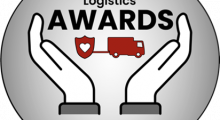In line with Moore’s Law and the pace of development in electronics, the modern power, capability and size of vehicle mount terminals (VMT) is improving. In the case of mobile computers on lift trucks, advances in the vehicles have expanded the opportunities for integrated performance and efficiency. However, the need for versatile computers has challenged suppliers to create platforms that work equally well across a variety of lift trucks.
When the concept of a forklift-mounted computer emerged, it was accompanied by a keyboard, separate battery and a better power conversion device specific to electric or propane, each of which had to be precisely and permanently integrated. Then, you had to manage, upgrade and optimize the operating systems. According to Ron D’Ambrosio, president and CEO of Glacier Computer, a single touchscreen terminal now houses all of these elements, but to address the hardware specs alone barely scratches the surface.
“The newest VMT technology is made to collect equipment and safety data from a vehicle management system, inventory and operational data from a warehouse management system, and any other PC-driven processes that the enterprise requires,” D’Ambrosio says. “Then it must not only disseminate that information, but provide the flexibility to orient the data to a variety of departments within the enterprise. This is the ‘Intelligent Forklift.’”
D’Ambrosio describes the new paradigm as a meeting of three worlds. The first is the built-in intelligence of modern lift trucks, which focuses on monitoring equipment activity like lifting and traveling. Then, he includes operator accountability factors like safety, accidents and productivity, as well as inventory tracking through sensors and scales. The third ties each lift truck to higher-level systems to inform navigation and dynamic task assignment while rolling all of the data up to enterprise management.
“As these three worlds merge at the VMT, each business will manage the flow of information a bit differently,” D’Ambrosio says. “Each stakeholder will depend on the data collected. These are not competing needs, even though they previously existed independently. Now they come together to take advantage of the reduced footprint and cost of devices on the lift truck.”
Studies suggest as many as 80% of lift trucks have a computer on them, D’Ambrosio says, and customer desires often begin with various form factors and work backward. “There was a time when tablets were not widely accepted as a VMT,” D’Ambrosio says. “There’s been a sea change to the point that about half of our clients ask for a tablet on their lift trucks, whether or not they know it’s what they need.”
To identify the ideal setup, D’Ambrosio says it’s important to determine if an operator needs to get on and off the lift truck to scan, capture and send data. If not, then fixed-mounted terminals are a better choice. Another concern is if the customer wants a computer for every lift truck or wants to move them around. A task might call for an operator to sling a tablet over his shoulder and use a scanner or RFID reader to pick to a cart or otherwise manage inventory.
“The computer lives on the lift truck, but its ability to communicate with the outside world is the key to productivity today,” D’Ambrosio says. “The intelligent lift truck is the center of data collection and transmission for all facets of the enterprise.”







